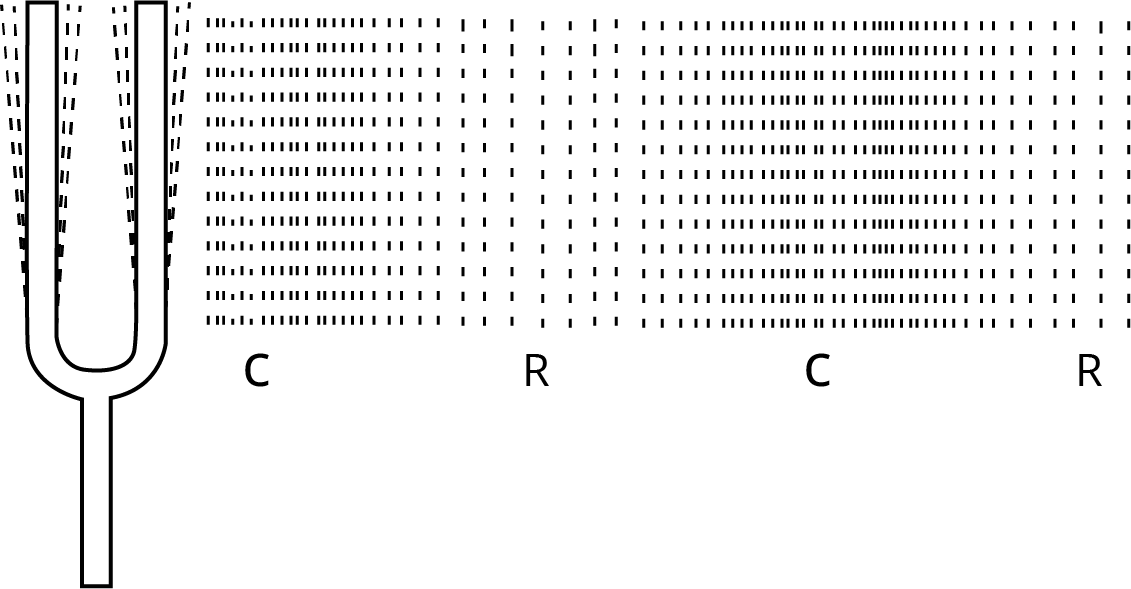How Can Sound Class 9 Questions And Answers Help In Preparing For Exams?
NCERT Solutions For Class 9 Science Chapter 11 Sound
FAQs on NCERT Solutions For Class 9 Science Chapter 11 Sound
1. How do you solve the NCERT exercise question on calculating wavelength from a given frequency (220 Hz) and speed (440 m/s)?
To find the wavelength in this NCERT problem, you use the fundamental wave equation. The correct method as per the CBSE pattern is:
- Given: Speed of sound (v) = 440 m/s and Frequency (ν) = 220 Hz.
- Formula: The relationship is Speed (v) = Wavelength (λ) × Frequency (ν).
- Calculation: To find the wavelength (λ), rearrange the formula to λ = v / ν.
- Solution: Substitute the given values: λ = 440 / 220 = 2 metres.
Therefore, the correct answer is that the wavelength of the sound wave is 2 m.
2. According to the Class 9 Science textbook, why is a sound wave referred to as a mechanical wave?
A sound wave is called a mechanical wave because it requires a material medium (like air, water, or a solid) to travel. It propagates by causing the particles of the medium to vibrate and transfer energy. Without particles to vibrate, such as in a vacuum, sound cannot travel. This dependence on a medium is the defining characteristic of a mechanical wave.
3. What is the step-by-step NCERT solution for finding the distance of a reflecting surface if an echo returns in 3 seconds, given the speed of sound is 342 m/s?
The correct method to solve this problem is as follows:
- Given: Time for the echo to return (t) = 3 s, and Speed of sound (v) = 342 m/s.
- Calculate Total Distance: First, find the total distance the sound travelled (to the surface and back). The formula is Distance = Speed × Time. So, Total Distance = 342 m/s × 3 s = 1026 m.
- Find One-Way Distance: The echo time accounts for the sound's journey to the reflecting surface and its return. Therefore, the actual distance to the surface is half of the total distance travelled.
- Solution: Distance of the reflecting surface = 1026 m / 2 = 513 m.
4. When solving NCERT problems on echoes, why is it necessary to divide the total distance travelled by two?
It is necessary to divide the total distance by two because an echo represents a two-way journey for the sound wave. The time measured is for the sound to travel from the source to the reflecting object and then back to the source. Since the question asks for the distance between the source and the object (a one-way path), you must halve the total distance covered by the sound to get the correct answer.
5. How does the NCERT solution for Class 9 explain the production of sound by a vibrating object like a school bell?
The NCERT solution explains that when an object like a school bell vibrates, it disturbs the air particles adjacent to it. This process creates a wave:
- When the bell moves forward, it pushes and compresses the air in front of it, creating a region of high pressure called a compression.
- When the bell moves backward, it creates a region of low pressure called a rarefaction.
This continuous and rapid series of compressions and rarefactions forms a sound wave that propagates through the air to our ears.
6. What is the correct answer for the audible frequency range of a human ear as per the Class 9 Science Chapter 11 syllabus for 2025-26?
According to the NCERT syllabus, the standard audible frequency range for an average human ear is from 20 Hertz (Hz) to 20,000 Hertz (Hz). Sounds with frequencies below 20 Hz are classified as infrasound, while those above 20,000 Hz are classified as ultrasound, both of which are generally inaudible to humans.
7. In the NCERT question comparing thunder and lightning, what is the core scientific principle that explains why we see the flash before hearing the sound?
The core scientific principle is the vast difference between the speeds of light and sound. Although both are produced simultaneously, light travels significantly faster than sound.
- The speed of light in air is approximately 3 × 10⁸ m/s.
- The speed of sound in air is approximately 344 m/s.
Because of this huge difference, the light from the flash reaches an observer's eyes almost instantly, while the sound of thunder takes much longer to travel the same distance.
8. How is reverberation different from an echo, and what method do the NCERT solutions suggest to reduce it?
The key difference lies in clarity and repetition. An echo is a single, distinct reflection of sound that is heard separately from the original sound. In contrast, reverberation is the persistence of sound caused by multiple, rapid reflections from various surfaces, making the sound seem prolonged and muddled. To reduce reverberation in large spaces like auditoriums, the NCERT solutions recommend covering walls and ceilings with sound-absorbent materials like compressed fibreboard, rough plaster, or heavy draperies.
9. The NCERT solutions state that sound travels fastest in solids and slowest in gases. What is the reason behind this?
The reason sound travels at different speeds in different media is related to the density and elasticity of the medium. The particles in a solid are packed very closely together and have strong intermolecular forces. When one particle vibrates, this proximity allows it to transfer the energy very quickly to its neighbour. In gases, the particles are much farther apart, so it takes longer for the vibration to be passed from one particle to the next. Therefore, the closer the particles are, the faster the sound wave can propagate.




















 Watch Video
Watch Video


















